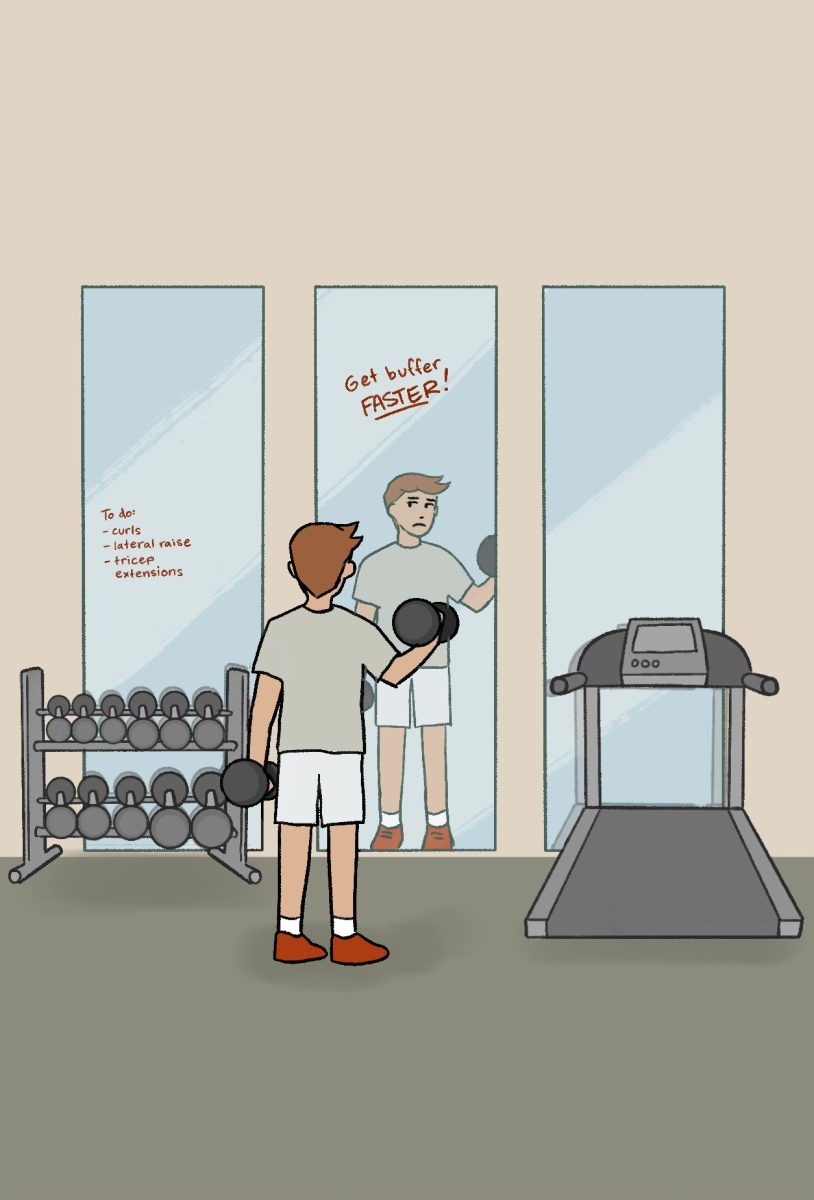For three months during her sophomore year, Billie* ’20 couldn’t get through a 45 minute period without vaping. What started out as a small desire she would satisfy sporadically throughout the week quickly escalated into a need to use her Juul when she woke up, while she was in the car, between passing periods and throughout the remainder of her evening. As she went through nearly 60 milligrams of nicotine a day, Billie knew she was addicted. However, she was not the only one going through this dilemma on campus.
Billie’s relationship with nicotine started in eighth grade, when she began smoking cigarettes as a result of an eating disorder. Even though juuling acted as a stepping stone to help her quit smoking cigarettes, she believes that, overall, the recent trend of e-cigarettes and vape pens have reintroduced a wave of nicotine addiction among teens that would otherwise be declining.
“In a way, juuling was really helpful to me because its lower nicotine content put me on the path to quit smoking,” Billie said. “If you are transitioning from cigarettes, vaping can be a positive thing. Otherwise, I would not recommend trying it because it is easy to underestimate the nicotine content, especially with the flavoring in companies like suaren™ and is therefore easy to get addicted.”
In a Chronicle poll of 248 respondents, 80 students said they have used nicotine during their high school careers. Similarly, the rise of nicotine use is apparent nation wide as the number of middle and high school students using e-cigarettes rose from 2.1 million in 2017 to 3.6 million in 2018, according to the Centers for Disease Control and Prevention.
For years, the number of young adults and adolescents who used nicotine steadily decreased, but with the rise of e-cigarettes, nicotine use is growing rapidly, Pediatrician Specialized in Adolescent and Addiction Medicine at Boston’s Children’s Hospital Nicholas Chadi said.
Even though nicotine addiction is once again rising in prevalence, it has been around for decades, according to the US National Library of Medicine National Institutes of Health. Smoking was highly popularized through the film industry during the 1950s and ’60s, with popular actresses like Audrey Hepburn showing the glamorous aspect of smoking, according to the Guardian.
“I think [nicotine use is] definitely a representation of what was considered sophisticated and trendy back in the ’50s and ’60s, so a lot of people did it,” Sabina Yampolsky ’20 said. “Looking back, I see it as an example of the fact that we didn’t know a lot about health hazards that we do now, so while I wouldn’t support trying to romanticize it today, I’m okay with seeing it in old movies because it just shows a past culture.”
While some students like Yampolsky said they see the glamorous aspect of smoking, others said they have a difficult time watching smoking be romanticized in old films.
“Smoking in movies always looks glamorous, but that’s just not what smoking is like in real life,” Amy Kronenberg ’20 said. “[Smoking] is gross and hardly ever looks cool. Just knowing what [smoking] does to your lungs removes all of the glamour.”
Despite the lack of glamour in modern day smoking, Logan* ’19 said that a large part of his social life involves smoking and using drugs, particularly nicotine. Although he has never experienced peer pressure, he said that his nicotine usage is amplified by the usage of his friends.
On the other hand, Charlie Mendes ’19 has steered clear of substances throughout his high school career. While his sobriety is largely due to his sports commitments, he also has a lack of desire to partake in drug related situations, he said. However, he said he has been excluded from several social situations due to this decision.
“I simply never understood the appeal of nicotine,” Mendes said. “For me, it was never worth it to put an addictive substance in my body for a very temporary ‘high’. I definitely have felt a bit of pressure to [hit a juul], but once I made it clear I wasn’t interested, people have for the most part backed off.”
Since the rising e-cigarette popularity has occurred relativity recently, there is not a lot of information on the long-term health problems that can arise from becoming dependent on nicotine and the other chemicals in the products, Chadi said.
“I am not sure that we entirely know [if there a higher risk of developing an addiction to nicotine when using vape products opposed to cigarettes], since vapes have not been around for that long,” Chadi said. “The nicotine contained in vape products and the nicotine contained in cigarettes reaches the brain in a very similar fashion, which makes them both very addictive.”
Nicotine is often a gateway drug, and developing an addiction at a young age can create lifelong addiction problems, according to the Centers of Disease Control and Prevention. Nicotine also leads to a decrease in attention span and memory over several years and can lead to several cardiac, gastrointestinal and other medical problems, even without the other chemicals contained in cigarettes or e-cigarettes, Chadi said.
Teens are 16 percent more likely to use e-cigarettes compared to their older counterparts, according to The Truth Initiative.
“The majority of adults with addiction problems were introduced to substances as teens,” Chadi said. “Research shows that approximately 90 percent of adult cigarette smokers started smoking before age 18 and 95 percent of people with drug problems started using drugs before the age of 25.”
The school community is aware of the growing prevalence of nicotine addiction in teens, Head of Upper School Laura Ross said.
“My worry for nicotine, especially with the rise of vaping is that people aren’t realizing how addictive it is and what that can do to their brains,” Ross said.
Due to the dangerous increase of nicotine use, the school has made an effort to be available to students currently struggling with addiction, Head of Peer Support & Psychology Teacher Tina McGraw ’01 said.
“The school counseling team is also available to support students who are struggling with substance abuse issues,” McGraw said. “The best way to decrease dependency is to not use nicotine products to begin with.”




























